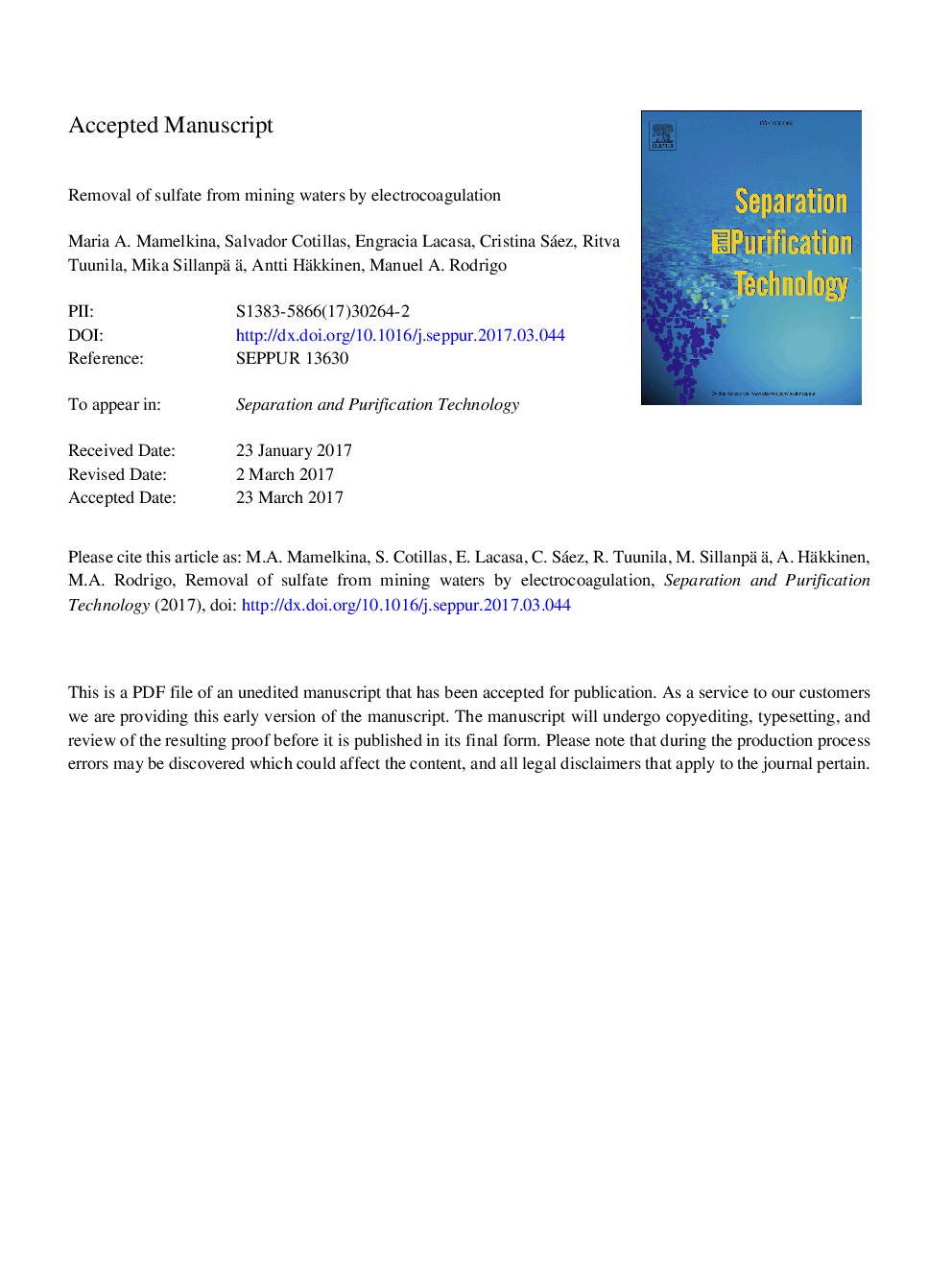| Article ID | Journal | Published Year | Pages | File Type |
|---|---|---|---|---|
| 4989846 | Separation and Purification Technology | 2017 | 28 Pages |
Abstract
This work focuses on the removal of sulfate from mining waters by using electrocoagulation with iron electrodes. A comparison of the results obtained by electrocoagulation with those obtained with the application of conventional chemical coagulation is provided. The results show that sulfate can be removed from synthetic mining waters by electrocoagulation, and that the pH and coagulant dosage play a very important role. During chemical coagulation under acidic conditions, it is possible to use a low dosage of iron and remove more than 80% of the sulfate present in water. However, chemical coagulation seems to behave as a kind of ion-exchange process (from the viewpoint of effluent quality). Thus, significant concentrations of accumulated chloride (counter ion of iron in the coagulant added) prevents the use of the technology. This problem is avoided by the application of electrocoagulation, which attains good efficiencies that can be even increased by using a continuous process with a flocculation tank. This technology also helps to remove other ionic pollutants contained in the wastewater.
Related Topics
Physical Sciences and Engineering
Chemical Engineering
Filtration and Separation
Authors
Maria A. Mamelkina, Salvador Cotillas, Engracia Lacasa, Cristina Sáez, Ritva Tuunila, Mika Sillanpää, Antti Häkkinen, Manuel A. Rodrigo,
